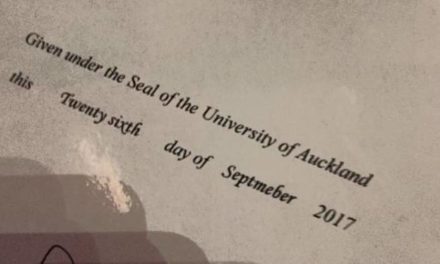The modern publishing model may have emerged with the invention of industrialised movable type in the 15th century, but the rules for early editing and proofreading stretch back to the 6th century A.D. when grammarian monks copied books by candlelight in silence and perfection was the goal!
In more recent history, commercial publishers have also long understood there is a strong link between financial success and maintaining high standards of production. The early 20th century saw the development of the editorial department as the heart of modern publishing operations, with editorial staff responsible for the comprehensive preparation of a manuscript before printing.
The NZIBS Proofreading and Editing course provides students with an introduction to the processes and responsibilities of proofreaders and editors in traditional publishing. During the course, students learn the fundamental skills required to start their own proofreading business or just enhance their editing capabilities in a current job.
It is now well-recognised that expert editors and proofreaders at all stages make a significant contribution to the quality and commercial success of the publishing industry. The editor works with authors and selects the content to be published, and ensures its focus, style and expression are fit for purpose. They also have oversight of publication processes in consultation with copyeditors, proofreaders and the manufacturing and marketing departments. Although proofreading may be included in an editor’s scope of work, it may also be done by a separate professional.
Proofreading has its own distinct responsibilities related to quality control and typically occurs after all the text has been styled, copyedited and prepared by a typesetter. A proofreader ensures that a manuscript or document is complete and conforms with the specified style guide. They also check for spelling, typographical and grammatical errors and any inconsistencies in layout, design and display.
Charles Dickens noted proofreaders also required a number of valuable key attributes, listing them as, “natural intelligence, much superadded cultivation, readiness of reference, quickness of resource, an excellent memory, and a clear understanding.” Dickens’ observations are as true today as they were in the 19th century.
The following points describe what these attributes might look like today.
- An intelligent approach or modus operandi can be defined as “intellectual capacity, brainpower, powers of reasoning and perceptiveness.” In other words, a proofreader needs to be naturally curious and actively engaged when reading. An ability to concentrate is also important while checking all the elements of a manuscript or document for inaccuracies, inconsistencies and omissions in spelling, grammar and punctuation.
- An eye for detail is often linked to a natural talent for spotting errors. Both these traits are very useful for a proofreader, and combined with a passion for grammatical, factual and typographical accuracy can be greatly enhanced with further training and practice.
- An in-depth knowledge of the English language is essential for professional proofreaders. They are impartial and neutral observers of the technical aspects of writing. Even if they don’t know everything at the start, they are prepared to research what they don’t know. Excellent proofreaders read widely and understand that English has changed over time. They keep an open mind about new developments.
- An excellent memory helps with reading comprehension and making coherent observations. That means when reading a long sentence, paragraph or chapter, a proofreader can hold on to essential details and inform the editor about inconsistencies and inaccuracies in a text.
- A persistent and patient attitude helps when learning a new skill, completing complex jobs, or taking on new types of work. Resilience can also be required when setting up a new business and looking for new clients.
- An ability to cope with pressure to meet deadlines, while continuing to work efficiently and accurately, is crucial for a proofreader to stand out from the crowd.
- An aptitude for speed and proficiency when reading and editing to pursue the perfect copy for clients operating within tight time constraints.
Want to get paid to find spelling misteaks?
Did you spot it? Do spelling “misteaks” jump off the page at you? Train to become a professional proofreader. Create new career opportunities. Study from home, at your own pace. Learn from industry experts.










